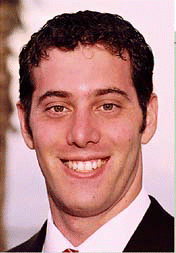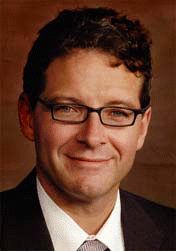SAN DIEGO-The prevalence of biofilms was discussed in several presentations at the Combined Otolaryngology Spring Meetings here. The occurrence of biofilms in chronic rhinosinusitis (CRS) and a potential new method for their removal were among the American Rhinologic Society (ARS) research topics presented April 26. The latter study was presented by ARS Basic Science Research Award winner Martin Desrosiers, MD.
Explore This Issue
June 2007In addition, another COSM presentation April 27, in the American Society of Pediatric Otolaryngology program, focused on biofilms in recurrent acute otitis media (RAOM). The researchers compared mucosal biofilm density of adenoids removed from children with RAOM and from those with obstructive sleep apnea.
An aggregate of microbes with a distinct three-dimensional, tower-like architecture, biofilms adhere to an inert or living surface. A common descriptive analogy is that planktonic bacteria are like plankton in the ocean, whereas a bacterial biofilm is similar to a coral reef structure in the sinuses. Bacterial biofilms have been a hot topic of research as scientists strive to determine their role in CRS and other diseases.
Study on Biofilms and CRS
A study conducted by researchers in the Department of Otorhinolaryngology, Head and Neck Surgery at the University of Pennsylvania indicated that 28.6% of CRS patients’ sinonasal mucopurulence had microbes that contain biofilm-forming capacity. Many of these individuals had a history of prior infections and/or multiple prior surgeries.
The scientists obtained endoscopic cultures from 157 clinic patients with evidence of mucopurulence. Biofilm-forming capability was determined using a modification of the Moskowitz method by comparing the bacteria to negative and positive controls. Biofilm formation was determined on concomitant values of biofilm-forming pseudomonas PAO1 and non-biofilm-forming mutant sad-31 (type IV pili) and sad-36 (flagella).
According to presenter Jacob Steiger, MD, when looking at the breakdown of bacterial isolates, we noted that the majority of recovered bacteria from patients were Staphylococcus aureus, of which only 15 percent formed biofilms in our assay. However, infections involving Pseudomonas aeruginosa (a total of 23 percent of all patient cultures) had a much higher incident of biofilm formation in our assay-as much as 90 percent.
Study co-authors Noam Cohen, MD, PhD, and James Palmer, MD, noted that bacteria in the biofilm are substantially more resistant to conventional antimicrobial therapy and host immune defense pathways than free bacteria and thus are hypothesized to contribute to medically recalcitrant rhinosinusitis.
Removing Biofilms
In another presentation, researchers from McGill University and the University of Montreal, Canada, collaborating with Montana State University and Medtronic ENT, described a new method that effectively removed nearly 100% of biofilms. The study tested the effectiveness of a device that uses pressure to irrigate the nose, and a citric acid zwitterionic surfactant, both developed by Medtronic ENT, which funded the study. Dr. Desrosiers, who is Associate Clinical Professor at McGill University and the University of Montreal, is also a paid consultant for Medtronic.


Leave a Reply